- Modules
- Background Design
- Linear Perspective
Linear Perspective
T-DES-002-006
Linear perspective is the process uses to bring a sense of dimension onto a flat piece of paper. It’s based on the principal that all parallel horizontal lines visually appear to converge to the same vanishing point and that all the vanishing points within an image are located on the same horizontal line known as the horizon line or the eye level line.

There are three different points of view you can use in your images:
- Looking straight ahead
- Looking up
- Looking down
When looking straight ahead, no matter what, the vertical lines will always be vertical. As for the horizontal lines, we can be dealing with either one point perspective or two depending on the orientation the object has in relation to the picture plane.
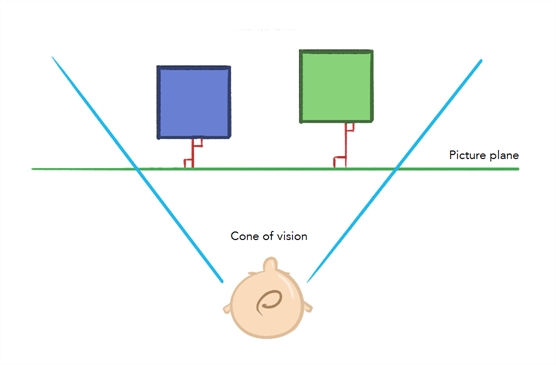
If one side of the object is parallel to the picture plane, only one vanishing point will be required as the horizontal lines constructing that side will remain parallel. The horizontal lines constructing the other side will converge to the same vanishing point.
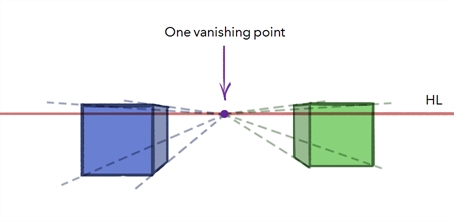
However, if none of the object’s sides is parallel to the picture plane, you must use two-point perspective; one vanishing point for each side.
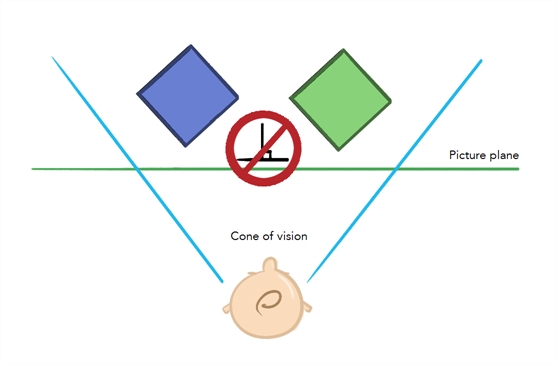
It is important to note that if you draw a few objects that are parallel to each other, you must use the same vanishing points for all of them. But as soon as you rotate one object, it own vanishing points, which remain on the same horizon line as the others.
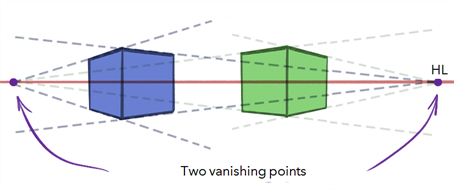
As previously mentioned, when you are looking straight ahead, the vertical lines stay vertical, but if you look up or down, there is an illusion that they are converging to a point that is either far away in the sky or far away in the ground respectively. This is known as three-point perspective.
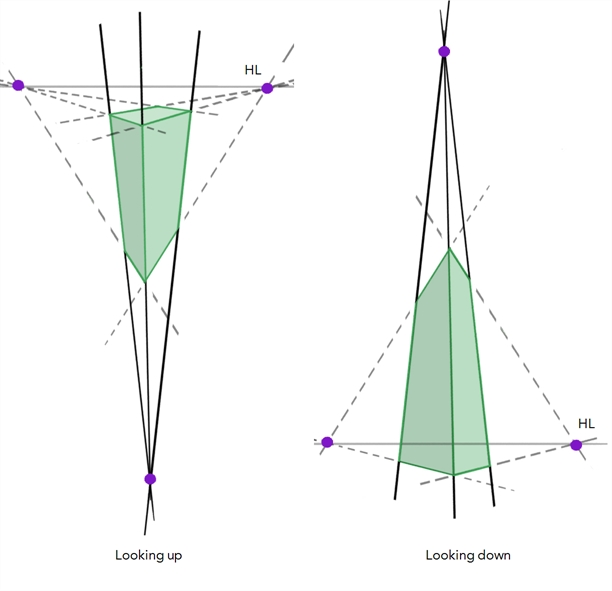
Now you know how the height of an object is visually affected by space. To complete the illusion of dimension within your images, their width also needs to recede into the distance.
Time Estimated 15 mins
Difficulty Level Beginner